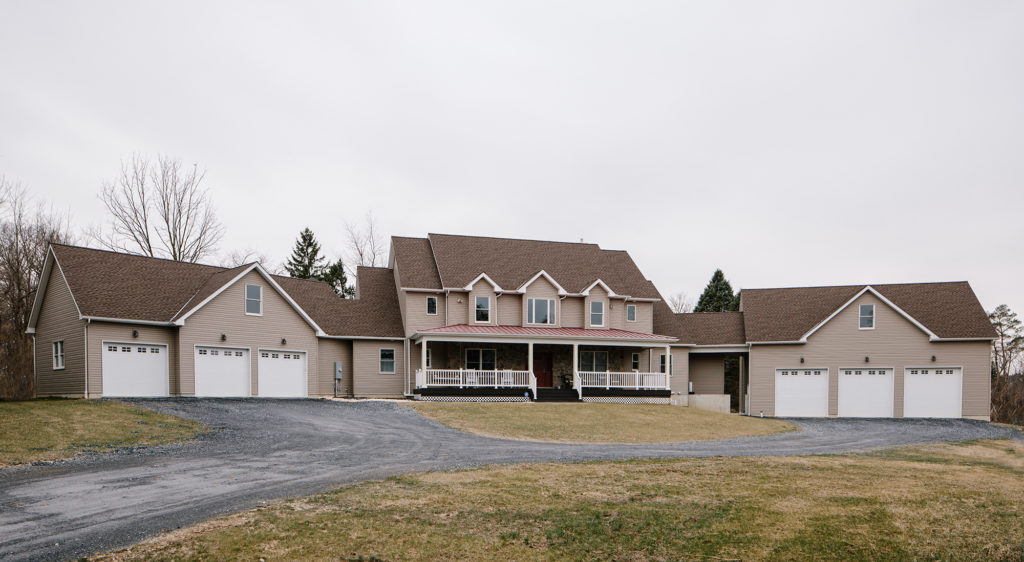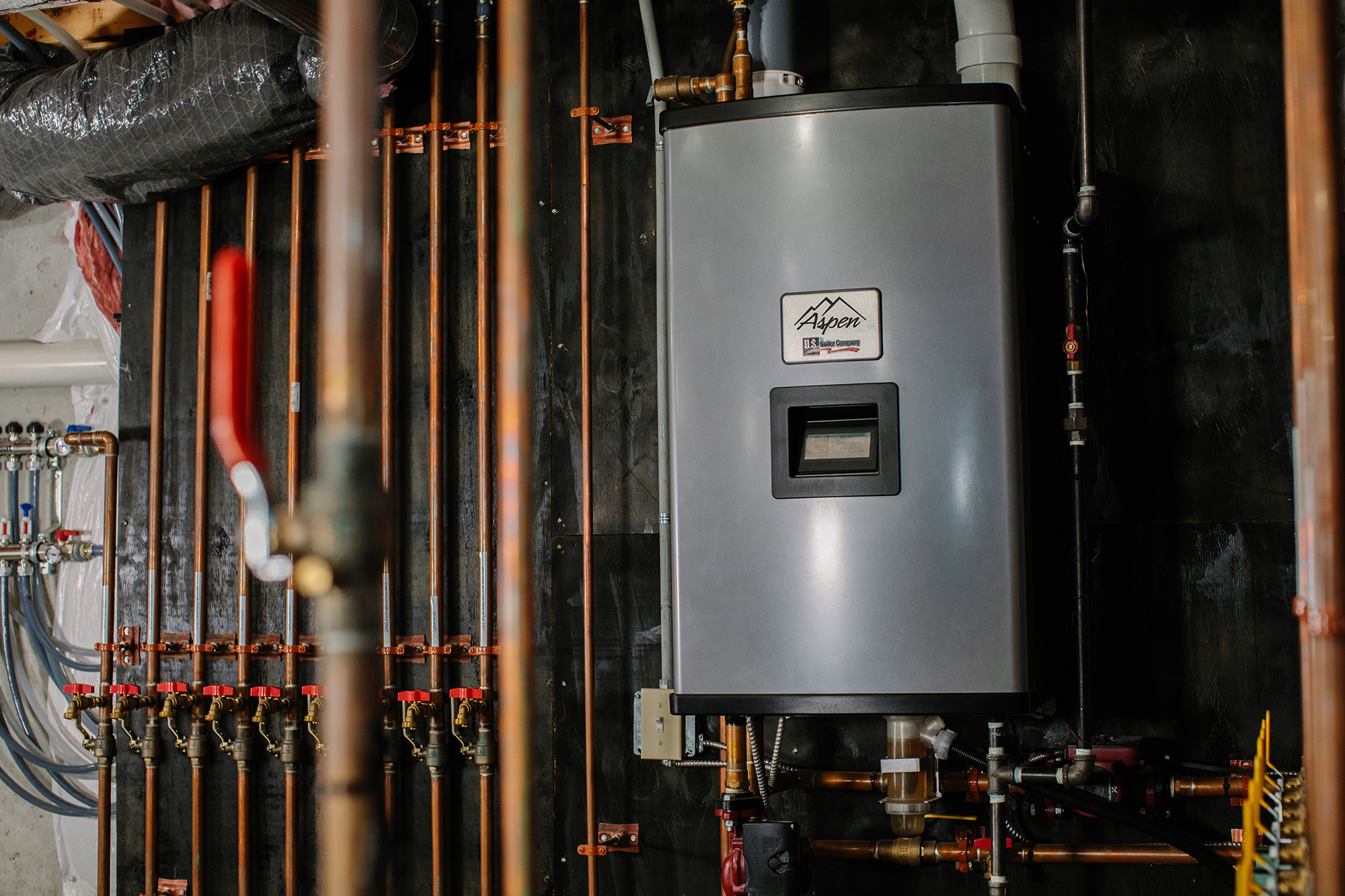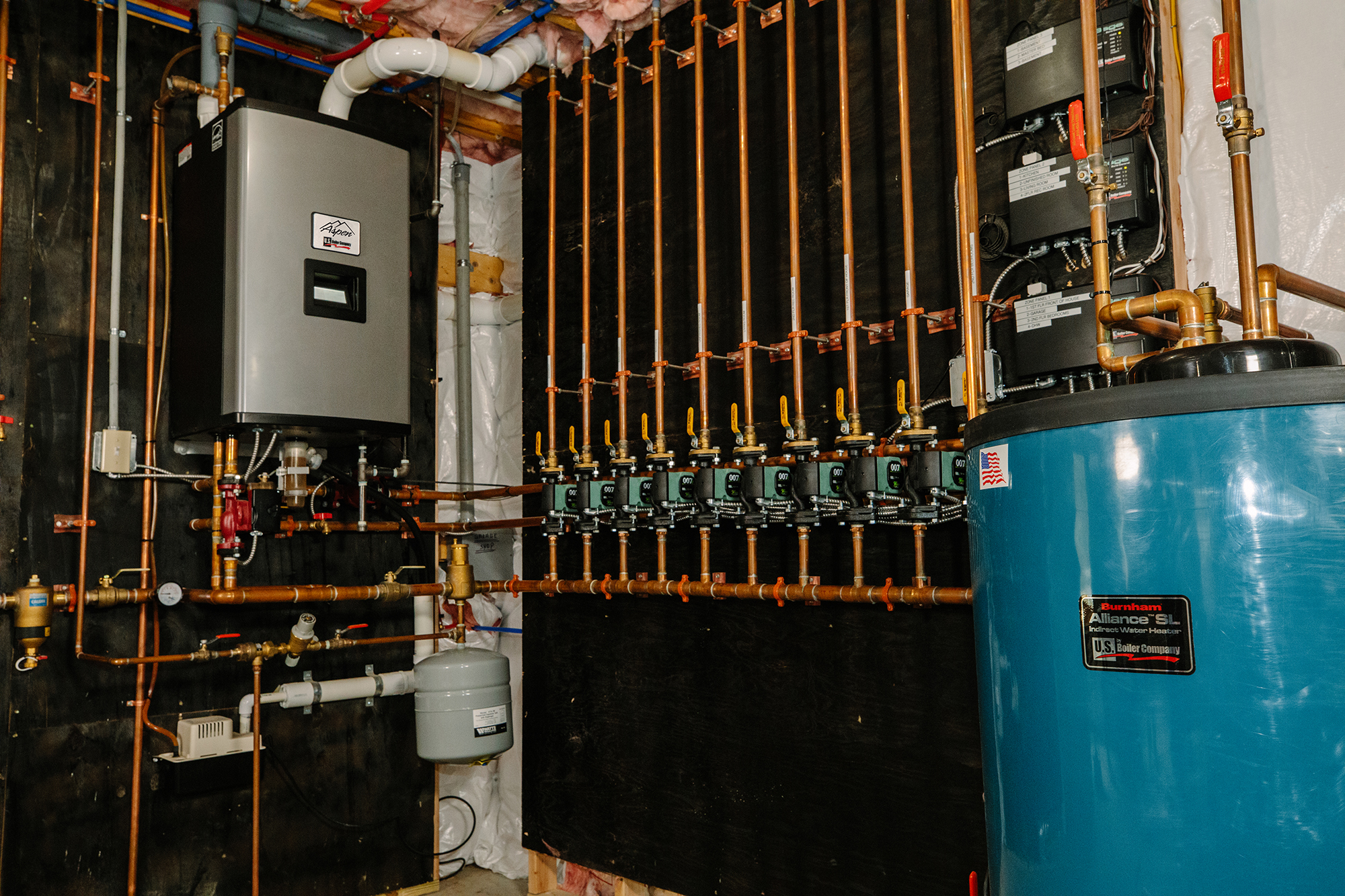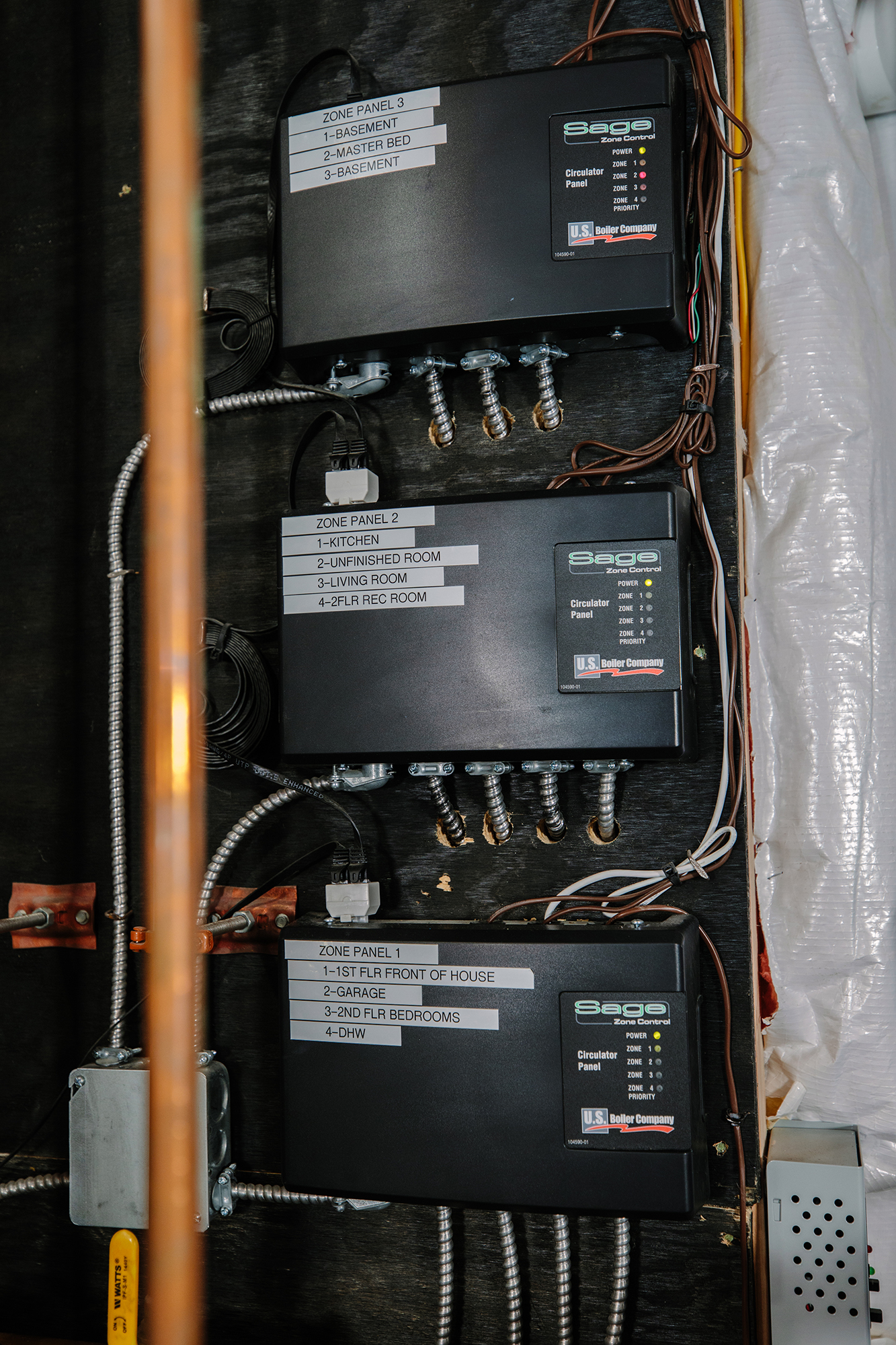People like to dream about what they’d do if given the opportunity to build their forever home. Maybe it’s a massive, luxurious abode designed for entertaining, or an architectural masterpiece with copious use of glass, open spaces with clean lines. Others might opt for smaller floorplan, green elements and a tiny carbon footprint.
For Michael Long, he knew two things; he wanted a large, multi-head shower and radiant in-floor heat. He’d settled on these items while at work, installing them for customers throughout northeastern PA.
Michael Long Plumbing & Heating, in Whitehall, PA, is a third generation company founded by Michael’s grandfather, Fred in 1963, who later turned the company over to his son. When Michael Sr. passed away in 2007, Michael Jr. took over at the ripe old age of 20. Since then, 85 percent of their work has been plumbing – both commercial and residential – and the rest is hydronics.
“I love installing boilers, but it’s not super common for us,” said Long. “The gas utility in this area handles most of the boiler replacements. The boiler work we do is typically in homes where my father and grandfather installed a hydronic system initially. I can tell by the brand of the old boiler who installed it. My grandfather installed U.S. Boiler products, and there are plenty of houses in our area that are still heated with boilers he installed.”
Long grew up in a house his father built with standing cast iron baseboard. The comfort level provided by a hydronic system was lost on him until he bought his first home and he experienced forced air for the first time. It was then that he decided he needed a boiler when he finally built his “forever” home.
“We developed an affinity for hydronics,” said Michael. “Building inspectors have always been blown away by our boiler installs. Between the inspectors and our current boiler customers, we get some hydronic referrals here and there, but plumbing is still our bread and butter.”
Long has installed palatial bathrooms and beautiful kitchens. Eventually, he decided he wanted his own “human carwash” shower to match his radiant system. With those two items in mind, he jumped at the chance to buy the right piece of property to raise a family.
Making big plans
In mid-2016, Long and his wife began building a home as they went, subbing out things like framing, air-side equipment installation and the kitchen cabinets. And none-too-soon. Before the house was complete, they learned that she was pregnant with twins.
Now, the 4,000 square foot house sits atop a wooded hill, with large, symmetrical garages on either side of the home. One garage serves the business while the other side is for personal vehicles. Inside, the two levels are divided into 10 hydronic zones, and two, Concord heat pumps provide air conditioning and shoulder season heat. Both units are 18 SEER; a four-ton unit for the main floor and a two-ton unit for the second floor.

Above: Long’s 4,000 square-foot home on top of a hill in Northeastern PA.
The home is traditional in style, with a large kitchen and dining room area in the center. Extensive use of hardwood floors made the decision to install radiant even easier. The final decision was which boiler to install.
Long had decided to use a U.S. Boiler cast iron model, converted to LP, until he was invited to an open house event at Weinstein Supply, in Allentown, PA. The U.S. Boiler condensing van was parked at the supply house, and the rep showed him the Aspen high efficiency condensing boiler.
“I had only installed a few condensing boilers at that point,” said Long. Around here, with affordable gas and propane and typically small houses, high efficiency boilers are a hard upsell. People who have been served well by their Series 2 boiler for decades don’t see a reason to change. But I knew that with a radiant system, a modulating boiler would be ideal. So I ordered a 199 MBH Aspen.”
A few months before he needed to start installing radiant tubing, Long submitted his home blueprints to Comfort Pro Systems, a manufacturer of oxygen-barrier PEX. They provided an exact piping diagram, along with the 14,000 lineal feet of half-inch tubing and stainless steel manifolds.
Pipe, pumps and boilers
Tubing was unrolled from 1,000 foot coils as it was laid in the basement and garage slabs. One the first and second floors, tubing was stapled beneath the subfloor.
The whole house is zones with ECM circulators, as Long doesn’t care for zone valves. Three U.S. Boiler Sage Zone Controls are used for the house. One additional zone provides heat to a 70-gallon Alliance SL sidearm tank.
“My father and grandfather installed different boiler brands,” said Long. Homeowners usually request the boiler that they’re used to. When they don’t, I suggest a U.S. Boiler model to fit the application. Their cast iron units come at a good price point, and I’ve never had an issue with them.”
With lots of circulators and three zones panels to wire, the task took Long an entire day to complete. When it came time to program the boiler and Sage Zone Controls, which were both new to him, Long called Roger Prevost, at ROI Marketing.
“Roger and Tim Reed, of Weinstein Supply, came out and made the whole process look really easy, and now after seeing it, I can say it was pretty easy. I won’t need a hand with it next time I install one of these systems. The help was greatly appreciated, though. Now the boiler and the zone panels communicate to provide the exact amount of heat that each zone needs, and no more. There’s fuel savings to be had with that technology.”
Above: Long’s heating system includes an Aspen condensing boiler, 3 Sage Zone Controls, and an Alliance SL sidearm tank.
A “forever system”
“Before installing a radiant system, I just couldn’t comprehend that a house could be heated with 90°F water,” said Long. “After the first winter in the home, it became obvious that this is the best way to heat a house. We spent $2,500 on 1,800 gallons of propane. This included the fuel to heat the garage and the house, as well as fueling a unit heater in my workshop, cooking and a fireplace. And we keep the place warm all because of the kids; usually 70°F.”
Long’s house on the hill is now a showpiece, too. For homeowners considering a radiant system, he’s eager to show them what they can have if they decide to choose the premium heating option.
And what about that big shower? That’s a showpiece too. It’s so big that a small wing had to be added to the home’s blueprint just for the shower and soaking tub. It’s complete with two shower heads, three rain heads, four body sprays and a hand shower. But Long admits that rarely is more than one head ever used at a time.
“The boiler and heating system are extremely comfortable and very quiet,” said Long. “We never know if it’s running of not. With young twins in the house, that’s a big plus. Naptime is uninterrupted!”





